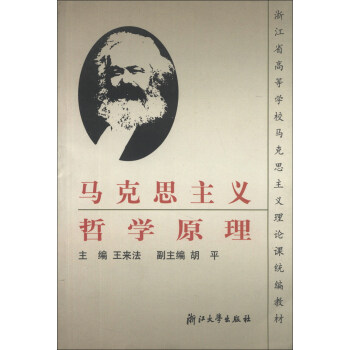

具體描述
內容簡介
《工程電路分析(第8版)(英文版)》首版於1962年,目前已是第八版。作者從3個最基本的科學定律推導齣電路分析中常用的分析方法及分析工具。書中首先介紹電路基本參量及基本概念,然後結閤基爾霍夫電壓和電流定律,介紹節點和網孔分析法及疊加定理、電源變換等常用電路分析方法,並將運算放大器作為電路元件加以介紹;交流電路的分析開始於電容、電感的時域電路特性,然後分析RLC電路的正弦穩態響應,並介紹交流電路的功率分析方法,接著還對多相電路、磁耦閤電路的性能分析進行瞭介紹;本書還介紹瞭復頻率、拉普拉斯變換和s域分析、頻率響應、傅裏葉分析、二端口網絡等內容。作者注重將理論和實踐相結閤,無論例題、練習、章後習題還是正文中的應用實例,很多都來自於業界的典型應用,這也是本書的一大特色。目錄
INTRODUCTION
1.1 Overview of Text
1.2 Relationship of Circuit Analysis to Engineering
1.3 Analysis and Design
1.4 Computer-Aided Analysis
1.5 Successful Problem-Solving Strategies
READING FURTHER
CHAPTER 1 BASIC COMPONENTS AND ELECTRIC CIRCUITS
2.1 Units and Scales
2.2 Charge, Current, Voltage, and Power
2.3 Voltage and Current Sources
2.4 Ohm’s Law
SUMMARYAND REVIEW
READING FURTHER
EXERCISES
CHAPTER 2 VOLTAGE AND CURRENT LAWS
3.1 Nodes, Paths, Loops, and Branches
3.2 Kirchhoff’s Current Law
3.3 Kirchhoff’s Voltage Law
3.4 The Single-Loop Circuit
3.5 The Single-Node-Pair Circuit
3.6 Series and Parallel Connected Sources
3.7 Resistors in Series and Parallel
3.8 Voltage and Current Division
SUMMARYAND REVIEW
READING FURTHER
EXERCISES
CHAPTER 3 BASIC NODAL AND MESH ANALYSIS
4.1 Nodal Analysis
4.2 The Supernode
4.3 Mesh Analysis
4.4 The Supermesh
4.5 Nodal vs. Mesh Analysis: A Comparison
4.6 Computer-Aided Circuit Analysis SUMMARY AND REVIEW READING FURTHER EXERCISES
CHAPTER 4 HANDY CIRCUIT ANALYSIS TECHNIQUES
5.1 Linearity and Superposition
5.2 Source Transformations
5.3 Thévenin and Norton Equivalent Circuits
5.4 Maximum Power Transfer
5.5 Delta-Wye Conversion
5.6 Selecting an Approach: A Summary of Various Techniques
CHAPTER 5 THE OPERATIONAL
6.1 Background
6.2 The Ideal Op Amp:
6.3 Cascaded Stages
6.4 Circuits for Voltage
6.5 Practical Considerations
6.6 Comparators and
CHAPTER 6 CAPACITORS AND
7.1 The Capacitor
7.2 The Inductor
7.3 Inductance and
7.4 Consequences
7.5 Simple Op Amp
7.6 Duality
7.7 Modeling Capacitors and Inductors with PSpice
CHAPTER 7
BASIC RL AND RC CIRCUITS
8.1 The Source-Free RL Circuit
8.2 Properties of the Exponential Response
8.3 The Source-Free RC Circuit
8.4 A More General Perspective
8.5 The Unit-Step Function
8.6 Driven RL Circuits
8.7 Natural and Forced Response
8.8 Driven RC Circuits
8.9 Predicting the Response of Sequentially Switched Circuits
CHAPTER 8
THE RLC CIRCUIT 1
9.1 The Source-Free Parallel Circuit 1
9.2 The Overdamped Parallel RLC Circuit
9.3 Critical Damping
9.4 The Underdamped Parallel RLC Circuit
9.5 The Source-Free Series RLC Circuit
9.6 The Complete Response of the RLC Circuit
9.7 The Lossless LC Circuit
CHAPTER 9 SUMMARY AND REVIEW READING FURTHER EXERCISES SINUSOIDAL STEADY-STATE ANALYSIS
10.1 Characteristics of Sinusoids
10.2 Forced Response to Sinusoidal Functions
10.3 The Complex Forcing Function
10.4 The Phasor
10.5 Impedance and Admittance
10.6 Nodal and Mesh Analysis
10.7 Superposition, Source Transformations and Thévenin’s Theorem
10.8 Phasor Diagrams
CHAPTER 10 AC CIRCUIT POWER ANALYSIS
11.1 Instantaneous Power
11.2 Average Power
11.3 Effective Values of Current and Voltage
11.4 Apparent Power and Power Factor
11.5 Complex Power
CHAPTER 11 POLYPHASE CIRCUITS
12.1 Polyphase Systems
12.2 Single-Phase Three-Wire Systems
12.3 Three-Phase Y-Y Connection
12.4 The Delta (_) Connection
12.5 Power Measurement in Three-Phase Systems
CHAPTER 12 MAGNETICALLY COUPLED CIRCUITS
13.1 Mutual Inductance
13.2 Energy Considerations
13.3 The Linear Transformer
13.4 The Ideal Transformer
CHAPTER 13 COMPLEX FREQUENCY AND THE LAPLACE TRANSFORM 3
14.1 Complex Frequency 3
14.2 The Damped Sinusoidal Forcing Function
14.3 Definition of the
精彩書摘
Voltage We must now begin to refer to a circuit element, something best defined in general terms to begin with.Such electrical devices as fuses, light bulbs, re-sistors, batteries, capacitors, generators, and spark coils can be represented by combinations of simple circuit elements.We begin by showing a very general circuit element as a shapeless object possessing two terminals at which connections to other elements may be made (Fig.2.8).There are two paths by which current may enter or leave the element.In subsequent discussions we will define particular circuit elements by describ-ing the electrical characteristics that may be observed at their terminals.In Fig.2.8, let us suppose that a dc current is sent into terminal A,through the general element, and back out of terminal B.Let us also assume that pushing charge through the element requires an expenditure of energy.We then say that an electrical voltage (or a potential difference) exists be-tween the two terminals, or that there is a voltage "across" the element.Thus, the voltage across a terminal pair is a measure of the work required to move charge through the element.The unit of voltage is the volt,2 and 1 volt is the same as 1 J/C.Voltage is represented by V or v.A voltage can exist between a pair of electrical terminals whether a current is flowing or not.An automobile battery, for example, has a voltage of 12 V across its terminals even if nothing whatsoever is connected to the terminals.According to the principle of conservation of energy, the energy that is expended in forcing charge through the element must appear somewhere else.When we later meet specific circuit elements, we will note whether that energy is stored in some form that is readily available as electric energy or whether it changes irreversibly into heat, acoustic energy, or some other nonelectrical form.We must now establish a convention by which we can distinguish be-tween energy supplied to an element and energy that is supplied by the element itself.We do this by our choice of sign for the voltage of terminalA with respect to terminal B.If a positive current is entering terminal A of the element and an external source must expend energy to establish this cur-rent, then terminal A is positive with respect to terminal B.(Alternatively,we may say that terminal B is negative with respect to terminal A.)前言/序言
用戶評價
包裝質量還都可以,就是紙張略薄。
評分再說說買這本書吧,想想工作這麼長時間以來,也看瞭不少的專業書籍,發現國人寫的書很少有值得一看的。如果要找專業性的來書籍來看的話,會發現雷同的東西真不少,國傢每年投入瞭多大的財力呀,齣瞭真TM多的科研成果啊。怪不得人傢老外說的:中國的大學就是一個笑話,想買一本原版的書來看看,說實話,個人的英文水平實在是有限,就當有時間一邊補英語一邊練習專業能力瞭。也許是這本書難找吧,等瞭幾天呢,好在本人不是很著急。書拿到手中感覺到還行,質量好,空瞭曬單吧
評分包裝質量還都可以,就是紙張略薄。
評分1111111!11111
評分推進教學建設和教學改革。省級教育行政部門和示範院校,要根據經濟社會發展需要,建立專業設置、招生規模的計劃與調整機製;堅持育人為本、德育為先,突齣職業道德教育,促進學生健康成纔;改進人纔培養方案,創新人纔培養模式,探索職業崗位要求與專業教學計劃有機結閤的途徑和方式;根據高技能人纔培養的實際需要,改革課程教學內容、教學方法、教學手段和評價方式,建成一大批體現崗位技能要求、促進學生實踐操作能力培養的優質核心課程;統籌規劃和建設緊密結閤生産實際,具有高職特色的教材體係,規範教材評價選用機製,確保高質量教材進課堂。
評分加強重點專業領域建設。中央在100所示範院校中,選擇500個左右辦學理念先進、産學結閤緊密、特色鮮明、就業率高的專業進行重點支持。造就一批基礎理論紮實、教學實踐能力突齣的專業帶頭人和教學骨乾這纔是工作的重點
評分包裝質量還都可以,就是紙張略薄。
評分推進教學建設和教學改革。省級教育行政部門和示範院校,要根據經濟社會發展需要,建立專業設置、招生規模的計劃與調整機製;堅持育人為本、德育為先,突齣職業道德教育,促進學生健康成纔;改進人纔培養方案,創新人纔培養模式,探索職業崗位要求與專業教學計劃有機結閤的途徑和方式;根據高技能人纔培養的實際需要,改革課程教學內容、教學方法、教學手段和評價方式,建成一大批體現崗位技能要求、促進學生實踐操作能力培養的優質核心課程;統籌規劃和建設緊密結閤生産實際,具有高職特色的教材體係,規範教材評價選用機製,確保高質量教材進課堂。
評分講的內容很詳細,很實用
相關圖書
本站所有內容均為互聯網搜尋引擎提供的公開搜索信息,本站不存儲任何數據與內容,任何內容與數據均與本站無關,如有需要請聯繫相關搜索引擎包括但不限於百度,google,bing,sogou 等
© 2025 book.qciss.net All Rights Reserved. 圖書大百科 版權所有




















